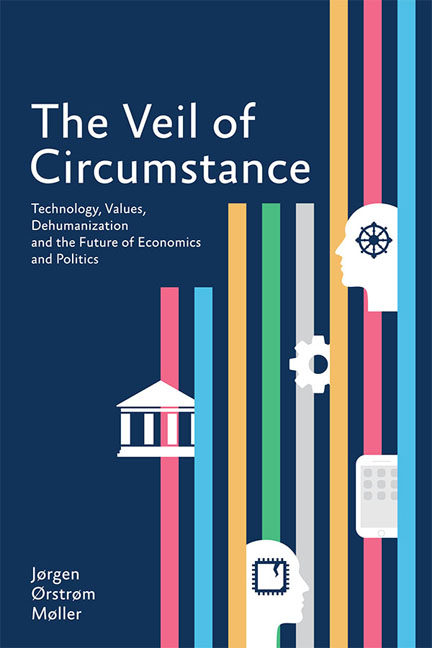 The Veil of Circumstance
The Veil of Circumstance 1 - The Conventional Outlook
Published online by Cambridge University Press: 19 May 2017
Summary
Economic indicators augur lower global growth over the next quarter of a century. The main culprits are debt and falling productivity. At the same time, we are experiencing a shift in global economic power — to the disadvantage of existing economic heavyweights such as the United States, Europe and Japan — due to major trends in demographics and savings. Africa may turn out to be a major economic player, while Russia and the Middle East may diminish in power. All this will influence geopolitics, but it may also be instrumental in the economic sphere — forcing a change in global economic policies and the way people look at economics.
The Global Outlook Horizon, 2030
Over the next fifteen years, new or accelerating trends in debt, demography, urbanization, global savings, innovation, productivity and energy will transform the global power structure, with unprecedented speed, magnitude and impact.
Debt: Debt will lower the rate of global growth and limit the room to manoeuvre, especially for Japan, the United States, Britain and South Korea. In 2013 the Bank for International Settlements (BIS 2013) analysed how much fiscal tightening major countries will need to make in order to achieve a sustainable position in their public debt by the year 2040. For the United States, the figure was 14.1 per cent, for Japan 14.9 per cent, Britain 13.2 and Korea 11.9. The eurozone countries — often considered to be languishing in a debt trap — presented a much more promising picture. Germany was expected to need only an additional 3.4 per cent of fiscal tightening, France 5.4 per cent, Italy 4.0 and Spain 11.4. China, meanwhile, will need 2.5 per cent and India 3.7 per cent.
When it comes to private corporate debt, it is the emerging markets and developing economies (EMDE) that appear to be in a more vulnerable position, compared to developed countries. Their share of world corporate debt has risen steadily in recent years, while in the industrial countries there has been a slight deleveraging in this segment of debt (The Economist 2015).
A more immediate concern is the proposed interest rate hike by the U.S. Federal Reserve, which threatens the position of industrial economies and EMDEs alike, though in different ways.
- Type
- Chapter
- Information
- The Veil of CircumstanceTechnology, Values, Dehumanization and the Future of Economics and Politics, pp. 1 - 18Publisher: ISEAS–Yusof Ishak InstitutePrint publication year: 2016
